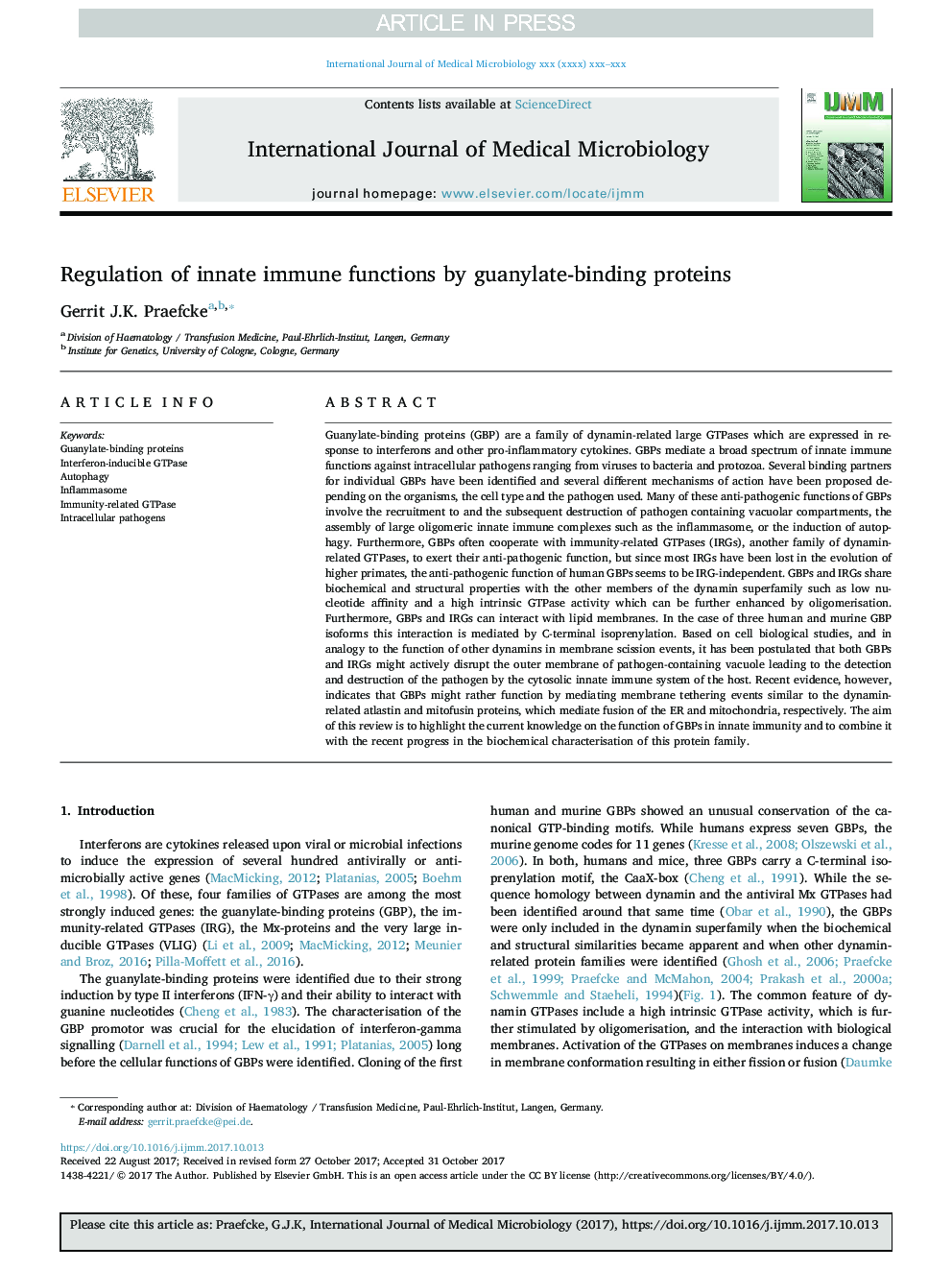| کد مقاله | کد نشریه | سال انتشار | مقاله انگلیسی | نسخه تمام متن |
|---|---|---|---|---|
| 8385101 | 1543667 | 2018 | 9 صفحه PDF | دانلود رایگان |
عنوان انگلیسی مقاله ISI
Regulation of innate immune functions by guanylate-binding proteins
ترجمه فارسی عنوان
تنظیم توابع ایمنی ذاتی با پروتئین های اتصال دهنده گانیلات
دانلود مقاله + سفارش ترجمه
دانلود مقاله ISI انگلیسی
رایگان برای ایرانیان
کلمات کلیدی
موضوعات مرتبط
علوم زیستی و بیوفناوری
بیوشیمی، ژنتیک و زیست شناسی مولکولی
بیوشیمی، ژنتیک و زیست شناسی مولکولی (عمومی)
چکیده انگلیسی
Guanylate-binding proteins (GBP) are a family of dynamin-related large GTPases which are expressed in response to interferons and other pro-inflammatory cytokines. GBPs mediate a broad spectrum of innate immune functions against intracellular pathogens ranging from viruses to bacteria and protozoa. Several binding partners for individual GBPs have been identified and several different mechanisms of action have been proposed depending on the organisms, the cell type and the pathogen used. Many of these anti-pathogenic functions of GBPs involve the recruitment to and the subsequent destruction of pathogen containing vacuolar compartments, the assembly of large oligomeric innate immune complexes such as the inflammasome, or the induction of autophagy. Furthermore, GBPs often cooperate with immunity-related GTPases (IRGs), another family of dynamin-related GTPases, to exert their anti-pathogenic function, but since most IRGs have been lost in the evolution of higher primates, the anti-pathogenic function of human GBPs seems to be IRG-independent. GBPs and IRGs share biochemical and structural properties with the other members of the dynamin superfamily such as low nucleotide affinity and a high intrinsic GTPase activity which can be further enhanced by oligomerisation. Furthermore, GBPs and IRGs can interact with lipid membranes. In the case of three human and murine GBP isoforms this interaction is mediated by C-terminal isoprenylation. Based on cell biological studies, and in analogy to the function of other dynamins in membrane scission events, it has been postulated that both GBPs and IRGs might actively disrupt the outer membrane of pathogen-containing vacuole leading to the detection and destruction of the pathogen by the cytosolic innate immune system of the host. Recent evidence, however, indicates that GBPs might rather function by mediating membrane tethering events similar to the dynamin-related atlastin and mitofusin proteins, which mediate fusion of the ER and mitochondria, respectively. The aim of this review is to highlight the current knowledge on the function of GBPs in innate immunity and to combine it with the recent progress in the biochemical characterisation of this protein family.
ناشر
Database: Elsevier - ScienceDirect (ساینس دایرکت)
Journal: International Journal of Medical Microbiology - Volume 308, Issue 1, January 2018, Pages 237-245
Journal: International Journal of Medical Microbiology - Volume 308, Issue 1, January 2018, Pages 237-245
نویسندگان
Gerrit J.K. Praefcke,
